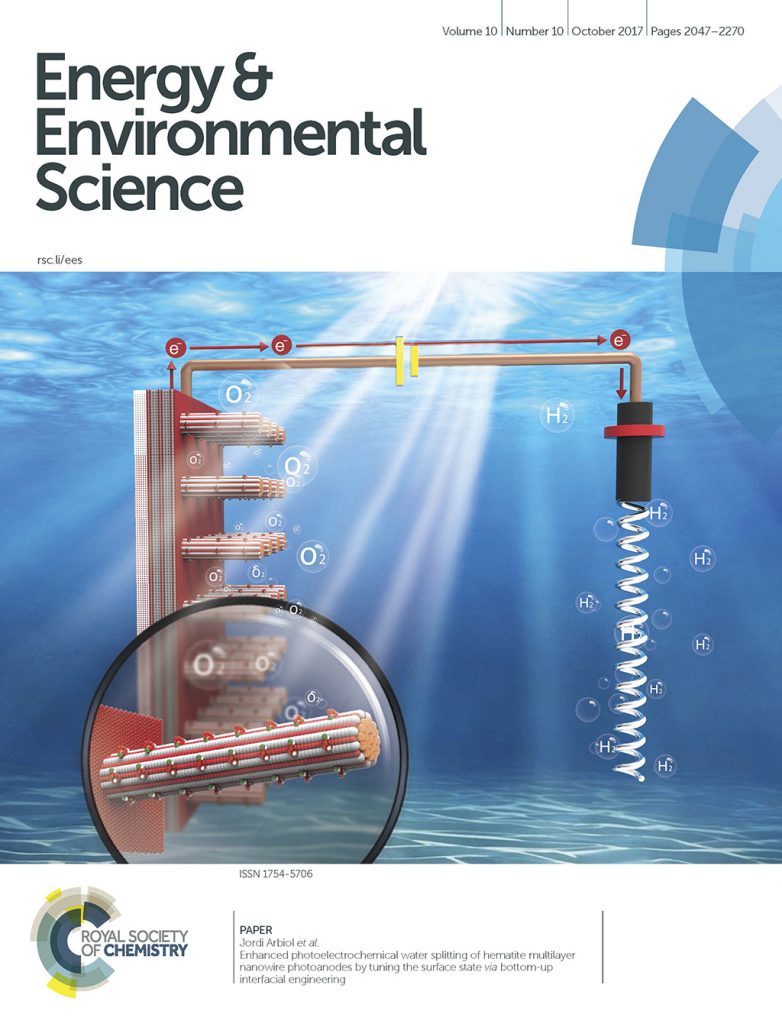ICN2 researchers led by ICREA Prof. Jordi Arbiol, in collaboration with the IREC and ICIQ, have produced a material for use in photoelectrochemical water splitting that is not only cheaper than existing alternatives, but increases both the efficiency and output of the process. Based on the integration of several materials into a multilayer nanowire structure, the research was featured on the October’s cover of Energy & Environmental Science.
Photoelectrochemical (PEC) water splitting is a process whereby sunlight is harnessed in combination with specialised semiconductor materials to induce electrolysis and separate the hydrogen from the water molecule. With global climate change driving the need to find more efficient sources of sustainable energy, it is a topic that has received much attention over recent years. What ICN2 researchers have done, in collaboration with IREC and ICIQ, is to optimise the properties of the semiconductor material for a more efficient and productive solar-to-fuel conversion.
Specifically, the semiconductor material is needed to absorb the solar energy and act as an electrode in the water splitting process. Hematite, a common semiconductor with a narrow bandgap ideally-suited to absorbing the solar spectrum, is a known candidate for this function as “photoanode”. As an iron oxide (α-Fe2O3), hematite is among the most abundant minerals on Earth’s surface and so is considerably cheaper than the gold and platinum typically used. However, issues relating to the flow of electric charge (namely, poor charge transport, surface charge recombination and slow charge transfer kinetics) have limited its practical application in PEC water splitting.
To overcome these limitations, previous studies have focused on the development of hematite composites, structures which incorporate a second material that lends compensatory or augmentative properties to the hematite base. What ICREA Prof. Jordi Arbiol and his team have done is to integrate four materials into a multilayer nanostructure and systematically study the PEC performance of the resulting photoanode, also shedding light on the underlying chemical mechanisms.
Reference
